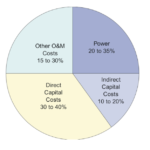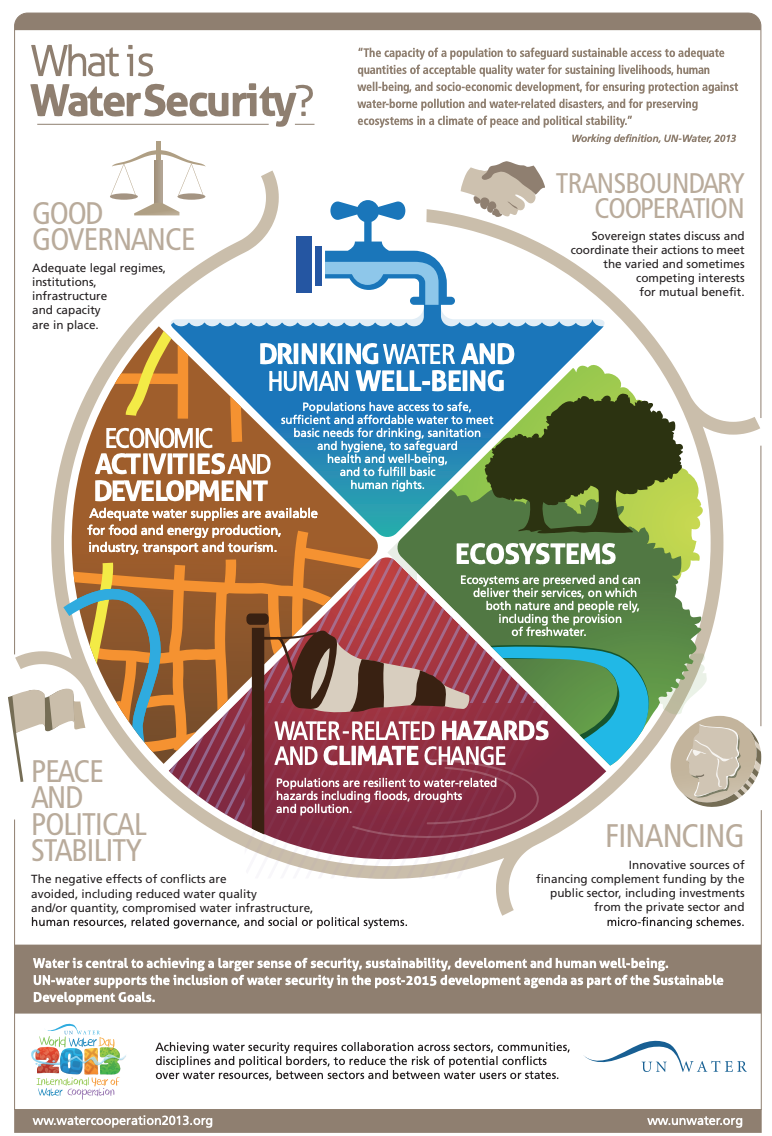With over half the world’s population predicted to live in water-stressed areas by 2025 we must find effective solutions to the incumbent water crisis. Water desalination has long been used as an alternative way of sourcing fresh water. However, it often goes hand in hand with environmental harm due to its energy-intensive nature and toxic by-products. Researchers at MIT and Shanghai Jiao Tong University have come up with a new and effective solution: solar powered desalination that provides affordable drinking water through renewable energy and without releasing toxic by-products.
Universal access to safe drinking water is a fundamental need and a human right. In 2017, the World Health Organisation (WHO) estimated that 785 million people still lacked access to basic water services, 144 million of which still collected drinking water directly from rivers, lakes and other surface water sources. Furthermore, as the climate crisis deepens it is expected to play an increasingly significant role in defining the water cycle. Scientists forecast that wet areas will become wetter and dry areas drier, placing additional stress on global water security.
Almost paradoxically, our planet is covered by 1,390 million kilometers cubed of water. However, 97.5% of this water is found in our salty seas and oceans, leaving only 2.5% fresh water, of which more than half is held in ice at the polar caps. Ensuring access to fresh water is therefore both problematic and an essential requisite for human existence and development. One potential solution, desalination, has been riddled with problems such as high energy demands and toxic by-products. For this reason, new research on solar panel powered desalination can become a game-changer and one of the most effective solutions to the incumbent water crisis, allowing us to tap into a virtually endless water supply without generating harmful emissions.
Traditionally, desalination has been a dirty business
Water desalination has been in practice for thousands of years, with Greek sailors known to have boiled water to evaporate fresh water away from the salt, and Romans even using clay filters to trap salt. Although today’s methods have become more sophisticated they still rely on the same basic concepts of distillation or filtration.
At the end of 2016, there were approximately 16,000 desalination plants around the world producing 86.55 million m3/day, with the United Arab Emirates, Saudi Arabia, and Israel possessing some of the largest facilities. It is estimated that desalination plants provide around 1% of global drinking water (although this percentage rises every year).
Desalination is seen as a potential solution to the water crises for two main reasons. Firstly, by tapping into seawater it grants access to a drought-proof and virtually limitless water supply. Secondly, over 50% of the global population lives in urban centers bordering the ocean.

However, one of the most significant inhibitors to the spread of desalination as an effective means with which to provide fresh water has been the high energy cost associated with the process. Furthermore, this energy-intensive process has a high carbon footprint and also produces negative by-products such as brine, which impact marine ecosystems and coastal areas.
According to a 2018 UN-sponsored study, the 16,000 desalination plants across the globe produce around 142 million cubic meters of salty brine every day in the generation of 95 million cubic meters of fresh water. In simple terms, for every liter of fresh water produced, desalination plants discharge an average of 1.5 liters of brine, although this amount can vary greatly according to the technology used and location.
High salinity and reduced dissolved oxygen levels can have profound impacts on benthic organisms, which can translate into ecological effects observable throughout the food chain.
Edward Jones, Wageningen University in the Netherlands.
Low impact solar powered desalination
The first solution to making desalination more environmentally friendly is to use renewable energy. In particular, solar energy has been identified as an attractive alternative. In February 2020, researchers at MIT and Shanghai Jiao Tong University in China released a new study that showcases a method for passive solar-powered desalination. This system could provide more than 1.5 gallons of fresh drinking water per hour for every square meter of solar collecting area and hence guarantee water security in exposed areas.

To desalinate water passively is particularly attractive as it exploits low-temperature heat (in this case from non-concentrated solar radiation) without the need for any mechanical or electrical add-ons, such as pumps or valves, during standard operating conditions.
The team has managed to create a multilayer solar still device that relies on a set of evaporating and condensing components like those used to distill liquors. “It uses flat panels to absorb heat and then transfer that heat to a layer of water so that it begins to evaporate. The vapor then condenses on the next panel. That water gets collected, while the heat from the vapor condensation gets passed to the next layer.”
The multilayer evaporator ensures that released heat flows to the next evaporating layer, recycling the solar heat and boosting overall efficiency. This is in contrast to typical condenser systems where heat is dispersed into the environment. “When you condense water, you release energy as heat,” explains Chenxi Wang, one of the lead researchers. “If you have more than one stage, you can take advantage of that heat.”
The process is not only energy efficient but also manages to tackle the topic of toxic by-products. According to the researchers: “Unlike other systems, this one has no accumulation of salt or concentration brines to be disposed of. In a free-floating configuration, any salt that accumulates during the day would simply be carried back out at night through the wicking material and back into the seawater.”
Another innovative aspect to the research is that it has provided a framework for understanding how to optimize multistage passive systems, which they call “thermally localized multistage desalination.” These systems could be used effectively in households, where roughly 1-square-meter solar collecting area has the potential to satisfy the daily drinking water needs of one person. As for the cost of these systems, a system built to serve the needs of a family can be made for about $100.
Solar powered desalination already in use
The non-profit organization Give Power has just installed a new solar powered desalination plant in Kenya. This plant is said to provide 35,000 people with fresh drinking water, producing around 20,000 gallons of water per day. Using Tesla’s solar panels and batteries, Give Power has been able to help the coastal town of Kiunga in their struggle against prolonged drought and water contamination due to sea-level rise.
The Kiunga facility initially cost $500,000 to build and involved one month of construction efforts. In the future, Give Power’s aims bring the cost of construction down to $100,00 per solar-powered desalination. They now charge water 1 penny per gallon and believe that the plant will pay for itself in under 5 years, and the money from that plant will then be used to build another.
With more research into solar powered desalination, there is the potential for advancing cost-effective, efficient and sustainable solutions that can guarantee water security.
Humanity needs to take swift action to address the increasingly severe global water crisis that faces the developing world. With our background in off-grid clean energy, GivePower can immediately help by deploying solar water farm solutions to save lives in areas throughout the world that suffer from prolonged water scarcity.
Hayes Barnard, founder and president of GivePower






